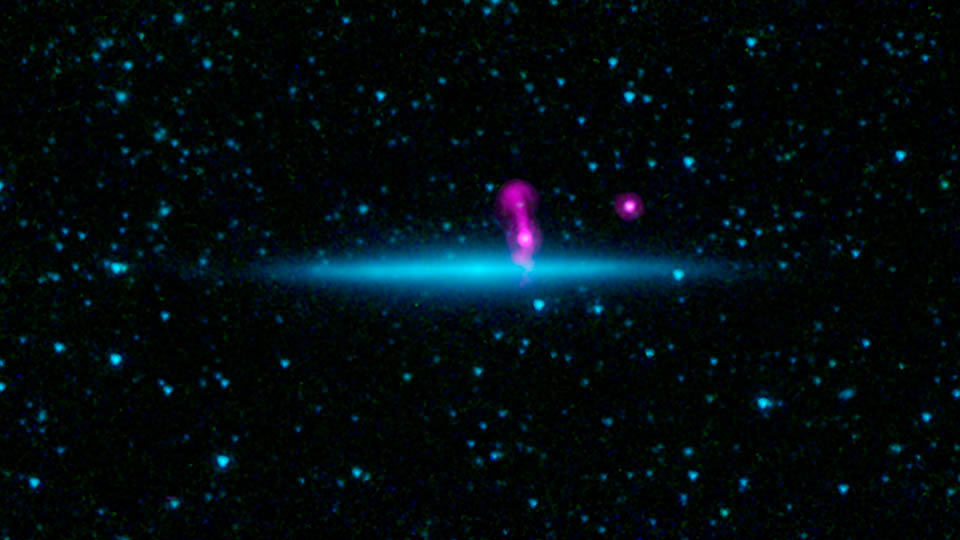UGC 8335 (
Arp 238) is a strongly interacting pair of spiral galaxies located in the constellation of Ursa Major, the Great Bear, ~ 400 million ly from Earth.
NGC 2371, is a planetary nebula, the glowing remains of a sun-like star. The remnant star visible at the center of NGC 2371 is the super-hot core of the former red giant, now stripped of its outer layers. NGC 2371 lies ~ 4300 ly away in the constellation Gemini.
A planetary nebula is an expanding cloud of gas ejected from a star that is nearing the end of its life. The nebula glows because of ultraviolet radiation from the hot remnant star at its center. In only a few thousand years the nebula will dissipate into space. The central star will then gradually cool down, eventually becoming a white dwarf, the final stage of evolution for nearly all stars.
Galaxy
UGC 10214 resides ~ 420 million ly away in the constellation Draco. Its distorted shape was caused by a small interloper, a very blue, compact, galaxy visible in the upper left corner. The tiny intruder is likely a hit and run galaxy that is now leaving the scene of the accident. Strong gravitational forces from the interaction created the long tail of stars and gas stretching out more than 280 000 ly.
Numerous young blue stars and star clusters, spawned by the galaxy collision, are seen in the spiral arms, as well as in the long 'tidal' tail of stars. Each of these clusters represents the formation of up to about a million stars. Their colour is blue because they contain very massive stars, which are 10 times hotter and 1 million times brighter than our Sun. Once formed, the star clusters become redder with age as the most massive and bluest stars exhaust their fuel and burn out. These clusters will eventually become old globular clusters similar to those found in essentially all halos of galaxies, including our own Milky Way.



















































